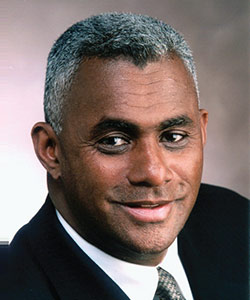by Trevor Wilson
Author and Global Human Equity Strategist
TWI Inc.
When I first started working, I remember hating performance evaluations. For me, the typical evaluation was an annual reminder of all the things I was not good at. One year, a new manager led me through an evaluation which turned out to be 58 minutes of praise about my various strengths and ended with the last two minutes brainstorming on how we work around my one apparent weakness. I had never had an annual review like that nor have I had once since. But what I will never forget is how this “strength focused” review made me feel. I was empowered, engaged and motivated.
In our last article on talent differentiation we identified the SHAPE V talent model, as a primary human equity tool, which shows managers how to better utilize the natural strengths and talents of their employees. Shape V moves beyond the standard diversity discussions about group differences in race, gender, culture, age, etc., to human equity discussions surrounding optimizing individual differences.
“Great managers do not believe everyone has unlimited potential they do not help people fix their weaknesses they play to their strengths.”
In the SHAPE V model the “S” stands for strength. These are the innate traits within employees that Buckingham and Coffman are referring to in the quote. So why is strength identification so important to human equity and optimizing individual performance? What difference does it make to organizational effectiveness or business performance?
In 1999 the Gallup organization conducted a massive in-depth study of 80,000 great managers.* These were the managers who excelled at turning each employee’s unique talents into performance. The departments or teams of these managers consistently achieved superior business results. They demonstrated improved profitability, productivity and customer satisfaction while reducing the rate of turnover for the best talent. The research found that identifying and utilizing employee strengths was more important than pay, benefits, perks or even a charismatic corporate leader. It enabled the building of a stronger, more effective workplace. It was this research that led to the now familiar adage “people don’t quit the organization; they quit their boss.”
So how do we find a person’s innate strength? There are at least two good tools. The first can be found by taking the Clifton StrengthsFinder which grew out of the Gallup research and can be accessed at the site www.strengthsfinder. com. A more recent tool is the Values in Action character strengths assessment found on the site www.viacharacter.org. This tool is an intriguing, positive psychology assessment that seeks to overcome the negative impacts of deficit-based performance assessment. Something great managers, like the one referred to above, clearly understood.
In our next article we will continue looking at SHAPE V by exploring the importance of looking at passion for one’s work.

Trevor Wilson
Global Human Equity™ Strategist, Toronto, ON. He is a dynamic speaker, a visionary thought leader and a global diversity and Human Equity™ strategist. Wilson is founder and president of TWI Inc






